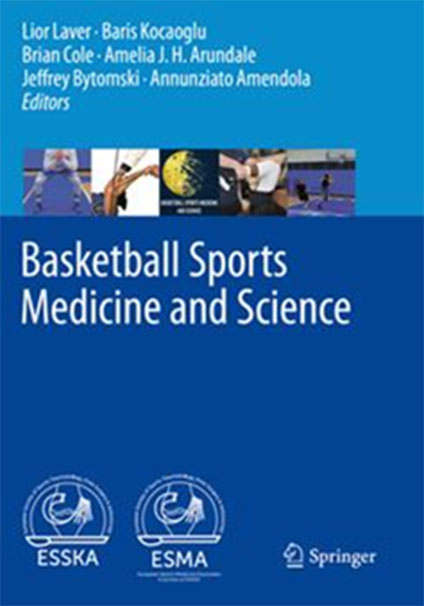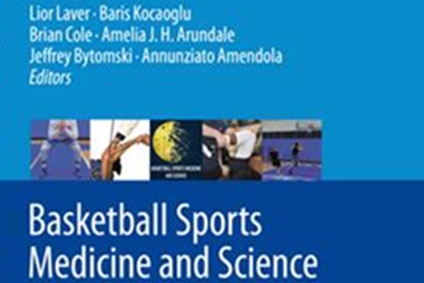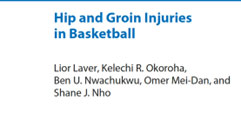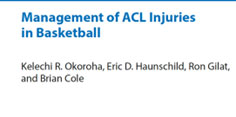
The world of sports medicine and science is constantly evolving, driven by the tireless efforts of dedicated professionals who seek to enhance the performance and well-being of athletes. Among these trailblazers is Dr. Kelechi Okoroha, an accomplished orthopedic sports surgeon whose groundbreaking work in the field has earned him a reputation as a leading authority on basketball sports medicine and science. In a testament to his expertise and commitment, Dr. Okoroha has authored textbook chapters that improve the way we understand and approach the intersection of basketball and orthopedic medicine.
Dr. Okoroha's journey to becoming a renowned figure in sports medicine and science began with a passion for basketball. As an avid player himself, he recognized the unique demands and challenges that basketball athletes face. Driven by a desire to bridge the gap between his two passions, medicine and basketball, he embarked on a path that would lead him to the forefront of sports medicine.
With extensive training in orthopedic surgery and sports medicine, Dr. Okoroha has worked with professional and collegiate athletes, gaining invaluable insights into the specific injuries and performance issues that afflict basketball players. He is now sharing his expertise with the world through the creation of textbook chapters that delve into the intricacies of Hip impingement and ACL injures in basketball players
ACL Injuries in Basketball Players:
Anterior Cruciate Ligament (ACL) injuries are among the most devastating injuries that can occur in basketball. The ACL is a crucial ligament in the knee, providing stability and preventing excessive forward movement of the shin bone relative to the thigh bone. Basketball players are particularly vulnerable to ACL injuries due to the rapid changes in direction, jumping, and pivoting involved in the game.
Causes:
- Non-Contact Injuries: Many ACL injuries occur without direct contact with another player. They often result from abrupt deceleration, pivoting, or landing from a jump, causing the ACL to tear due to the sudden change in direction or force.
- Contact Injuries: Collisions with other players can also lead to ACL injuries, especially when there's a forceful impact on the knee, causing the ligament to stretch or tear.
Prevention and Rehabilitation:
Preventing ACL injuries in basketball players is a top priority. Strategies include:
- Strength and Conditioning: A comprehensive strength and conditioning program can improve lower limb stability and reduce the risk of ACL injuries.
- Biomechanical Training: Athletes can be taught proper jumping and landing techniques to minimize stress on the ACL.
- Bracing: Some players with a history of ACL injuries may benefit from wearing a knee brace for added support.
- Rehabilitation: If an ACL injury does occur, rehabilitation is crucial. Physical therapists work with players to rebuild strength, flexibility, and proprioception while ensuring a safe return to play.
Hip Impingement in Basketball Players:
Hip impingement, also known as femoroacetabular impingement (FAI), is a condition where there is abnormal friction between the ball and socket of the hip joint. In basketball players, hip impingement can be problematic due to the demands of the sport on hip mobility and function. Hip impingement can also lead to labral tears and cartilage damage in the hip.
Causes:
- Morphological Factors: Some individuals have hip joint abnormalities that make them more prone to hip impingement (FAI). This can include a misshapen hip socket or a misshapen femoral head.
- Repetitive Hip Motion: The repetitive jumping, running, and pivoting in basketball can exacerbate hip impingement (FAI) by subjecting the joint to increased wear and tear.
Symptoms:
- Pain: Hip impingement (FAI) often leads to pain in the groin or hip area, particularly during or after physical activity.
- Limited Range of Motion: Players with hip impingement (FAI) may experience stiffness and reduced hip mobility, which can affect their performance on the court.
Management:
- Rest and Physical Therapy: Rest and physical therapy can help manage hip impingement (FAI) symptoms. Physical therapists work to improve hip joint function, strengthen supporting muscles, and alleviate pain.
- Medication: Non-steroidal anti-inflammatory drugs (NSAIDs) can be used to reduce pain and inflammation.
- Injections: In some cases, corticosteroid injections may be recommended to provide temporary relief from pain and inflammation.
- Surgical Intervention: If conservative treatments are ineffective, surgery may be necessary to correct structural abnormalities in the hip joint.
While Dr. Okoroha's textbook chapters are aimed at professionals in the fields of sports medicine and science, they are also a valuable resource for athletes of all levels. Whether you're a young basketball player aspiring to greatness or a seasoned pro looking to extend your career, the insights and knowledge contained within these chapters can make a significant difference in your journey.











